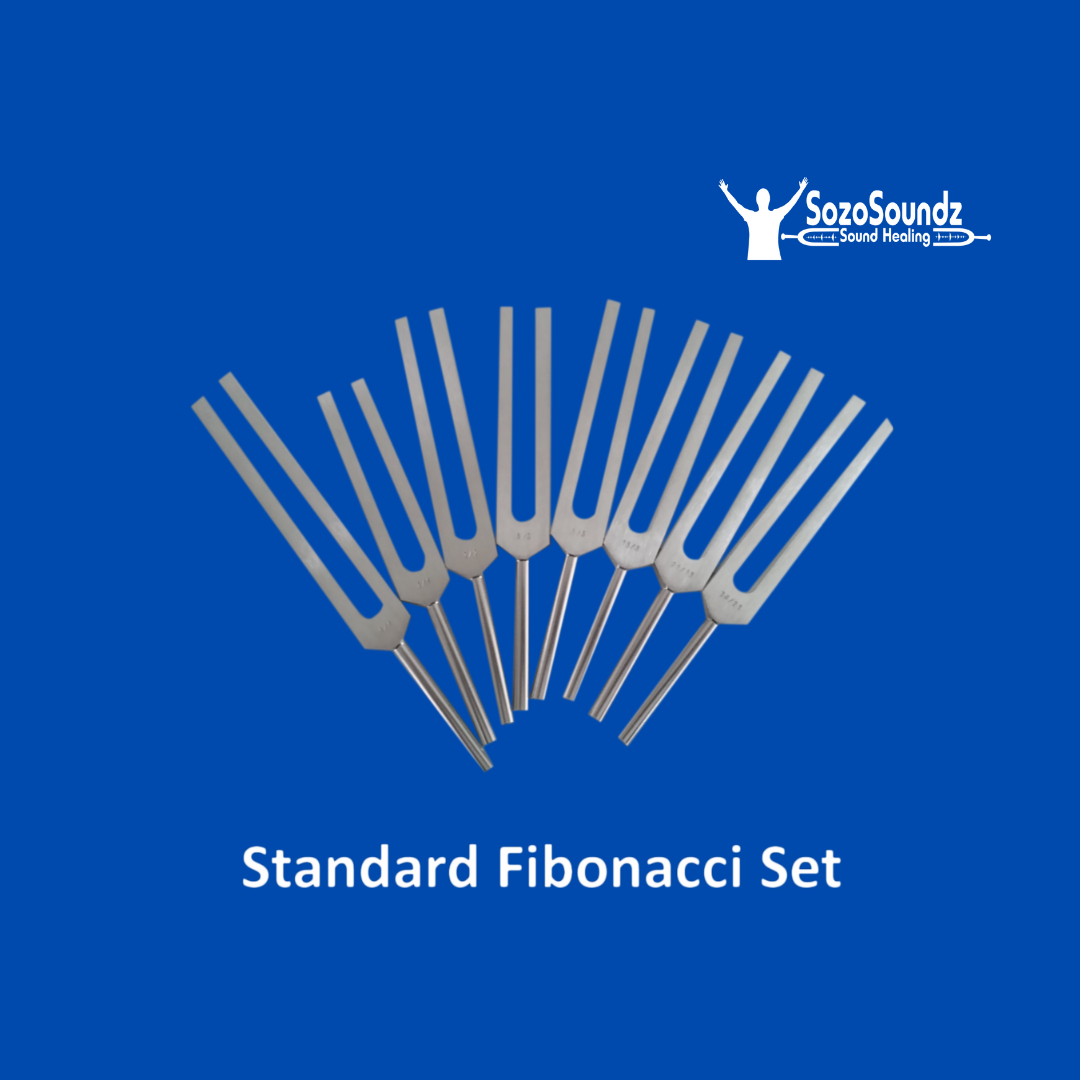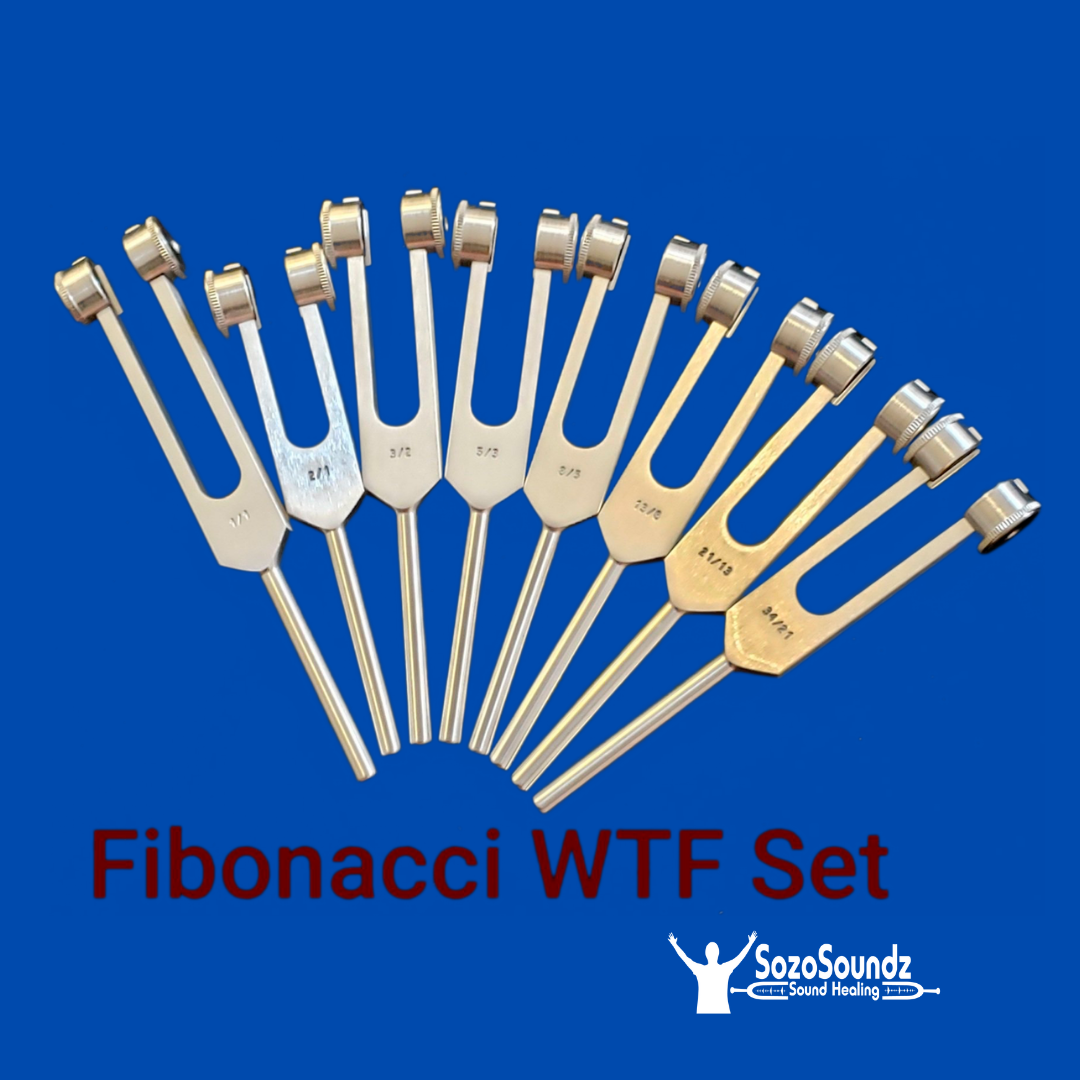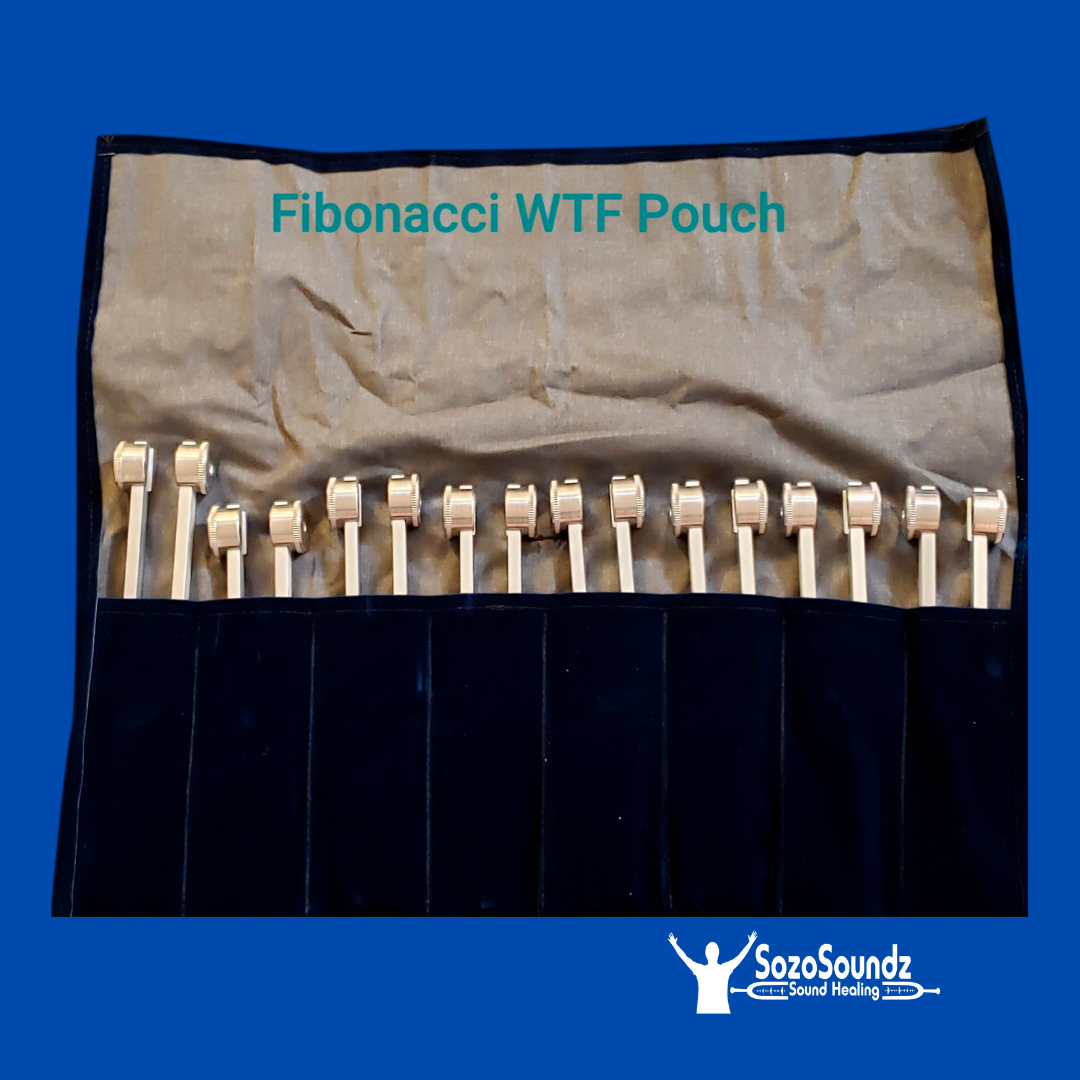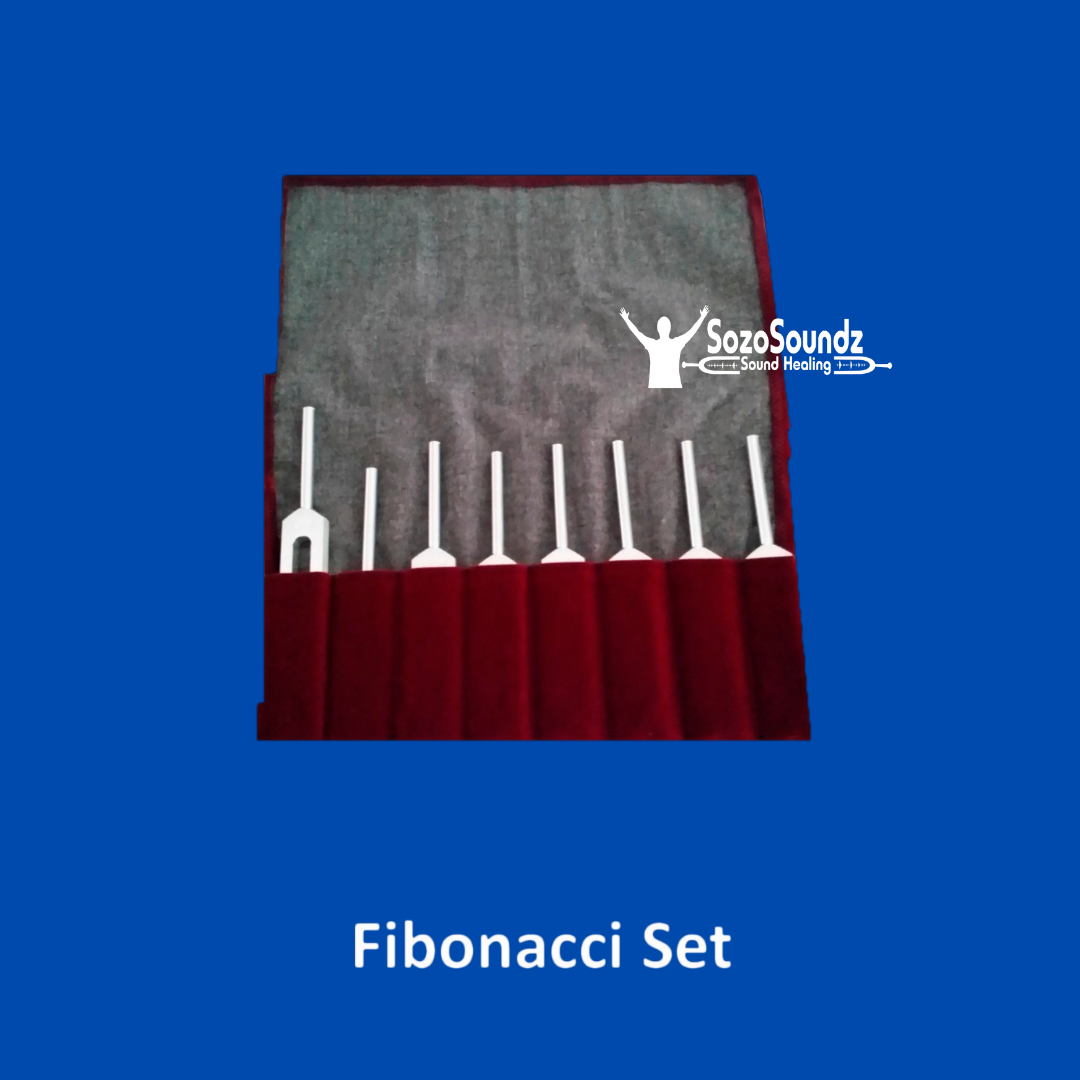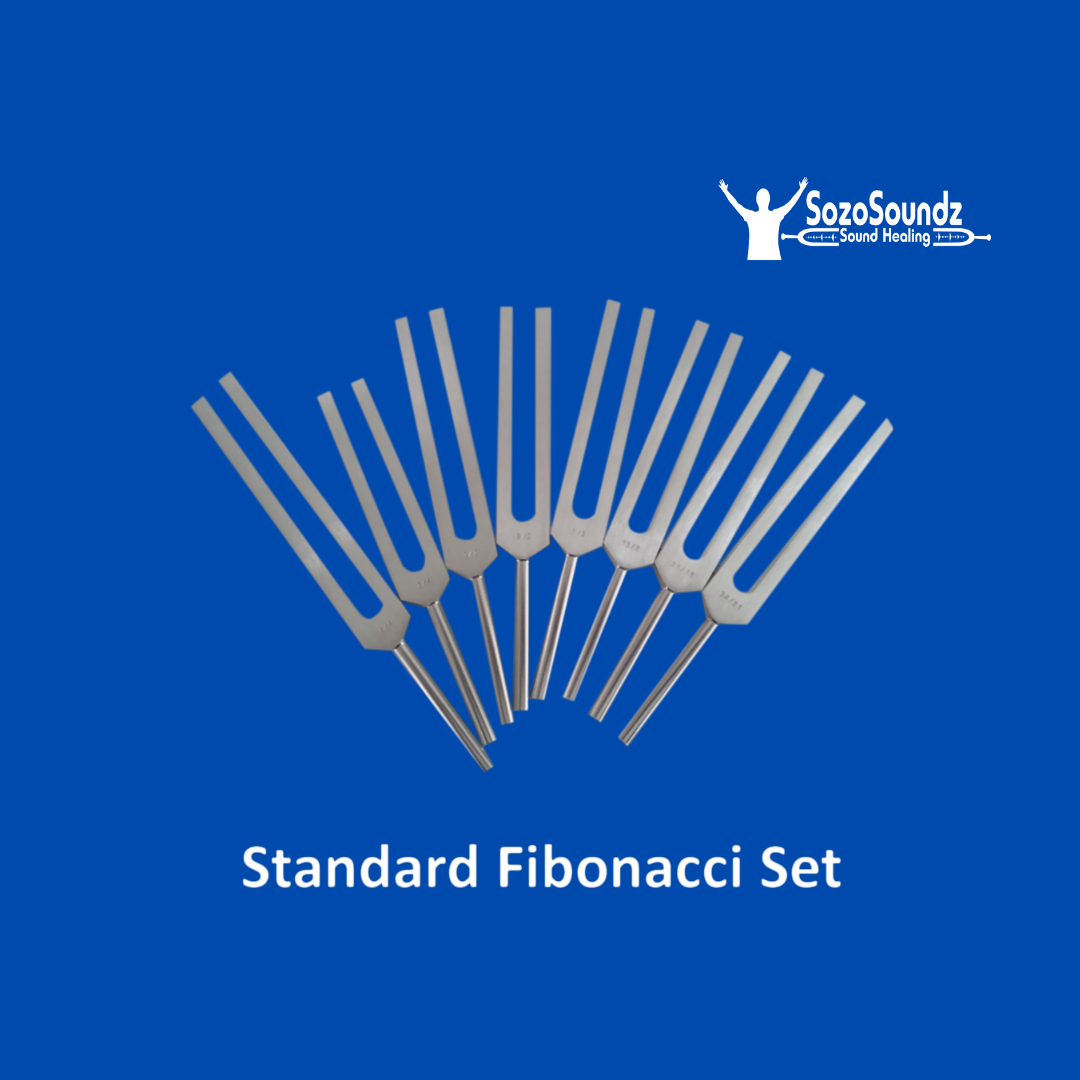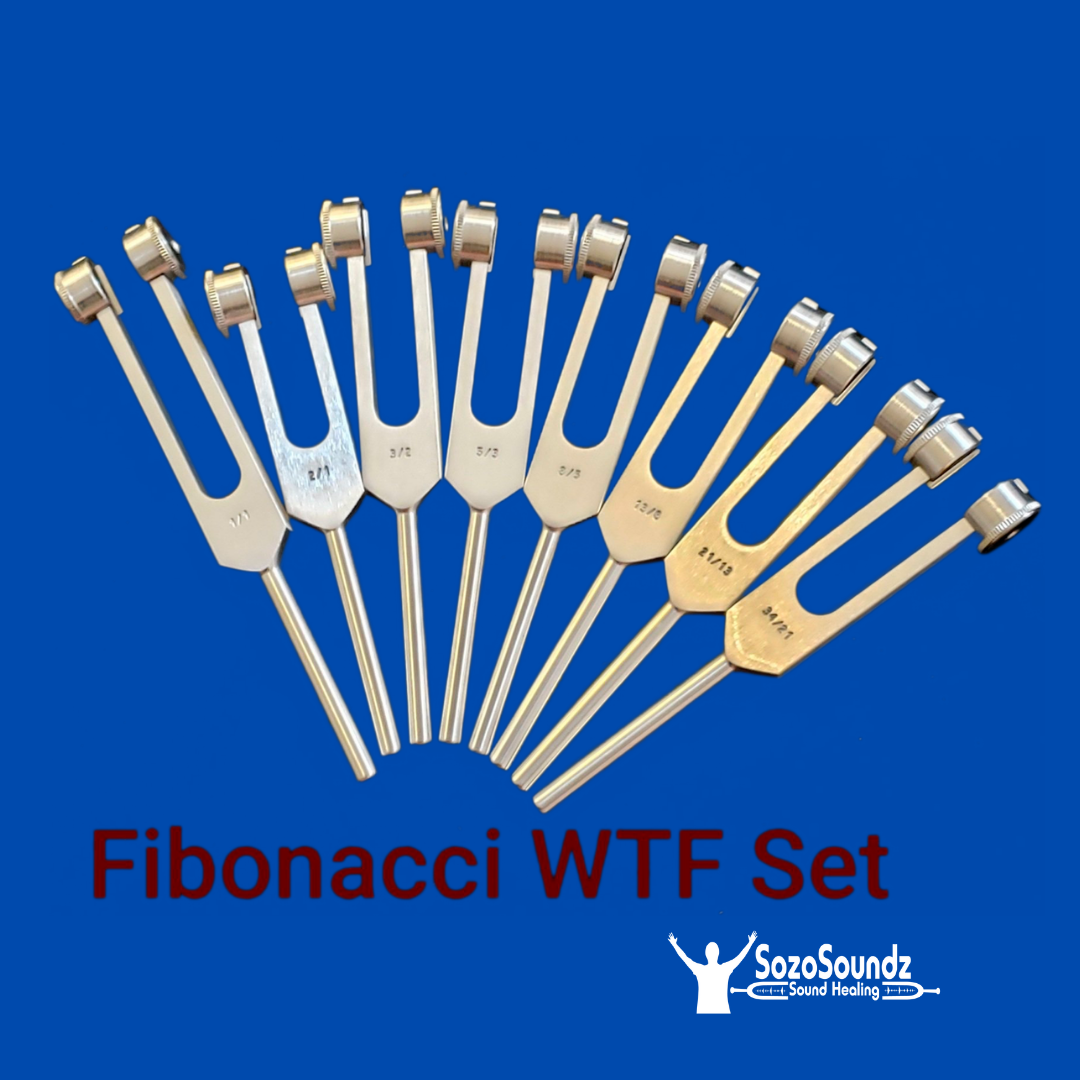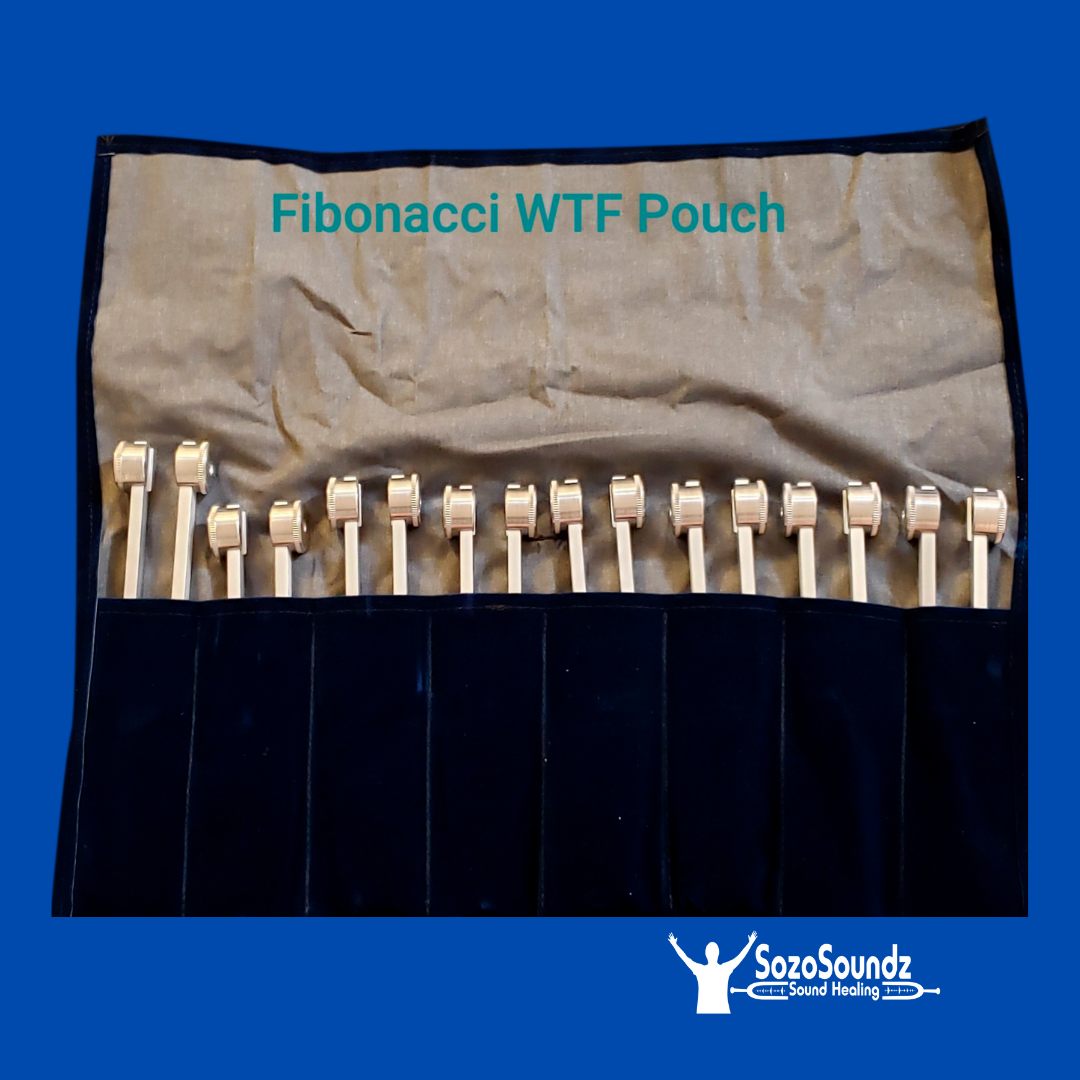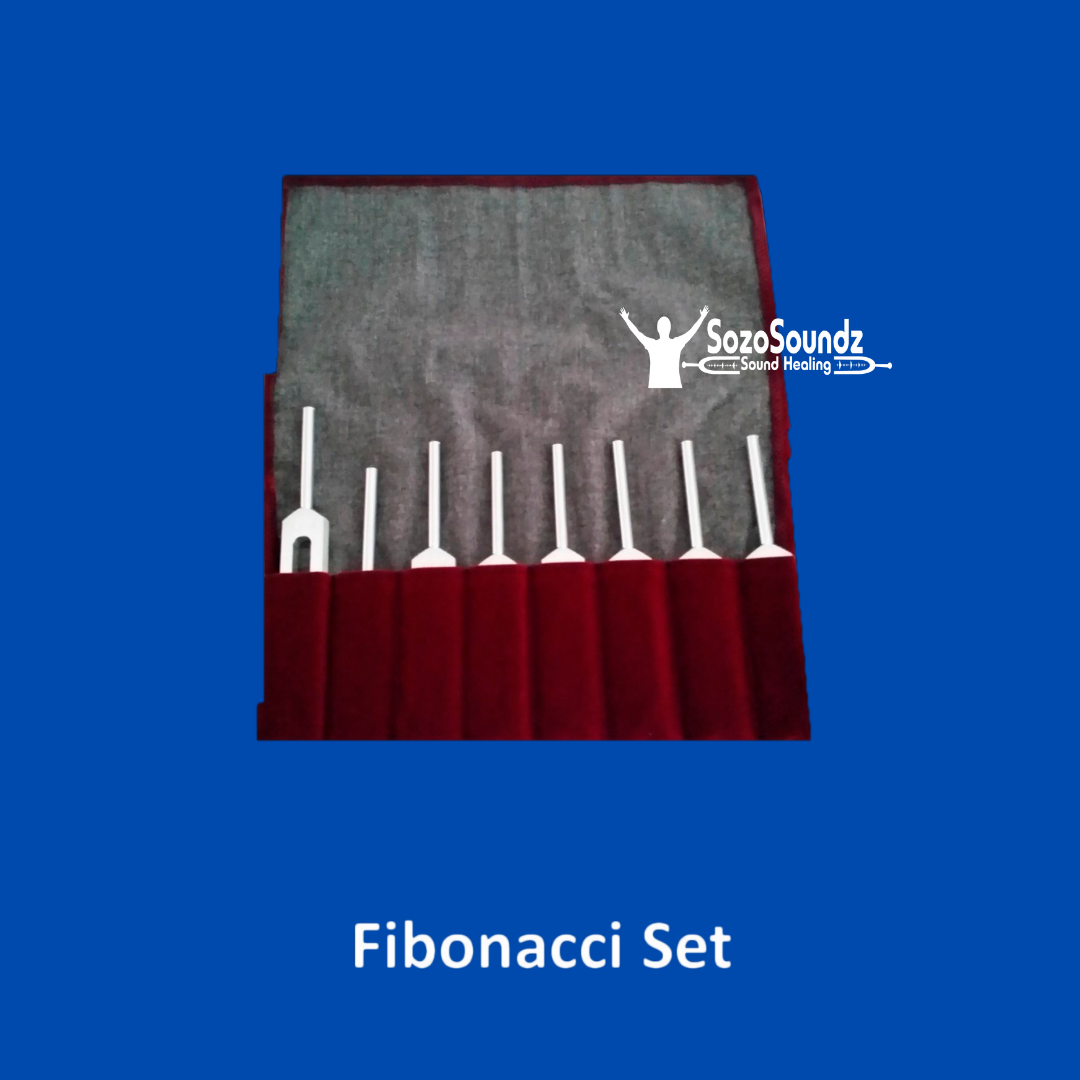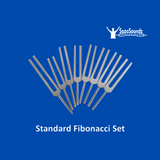Riverbank Labs
Fibonacci Tuning Forks
Fibonacci Tuning Forks
Couldn't load pickup availability
SozoSoundz offers the Fibonacci Series. We have the traditional set in weighted and unweighted and also the Solfeggio Fibonacci Set. Select which one you would prefer in the drop down menu in your cart at the top of this page. Both include 8 forks.
What do the Fibonacci Forks do?
These forks bring you into your fullness on the earth as well as heaven. The still point begins with the reality where you are currently at. This vortex soon connects one to higher realms and dimensions energetically and spirals you upward. The Fibonacci Tuning Forks also help with balancing the nervous system and thus are a tool in healing trauma and addictions.
What is the Fibonacci Sequence and where did it come from?
Fibonacci was an Italian mathematician who discovered a series of relationships in numbers where numbers after the first two is the sum of the two preceding ones. An example is 1, 1, 2, 3, 5, 8, 13, 21, 34 and etc. This series of numbers are closely related to the Lucan numbers which form a sequence of ratios which are closely connected with the golden ratio. This unique pattern has been named the Fibonacci sequence.
What is the Golden Ratio?
The golden ratio is known by many names such as: golden mean, golden section and etc. It is a common mathematical ratio found in nature which describes perfectly symmetrical relationship between two proportions. Approximately equal to a 1:1.61 ratio between the two proportions. . The golden ratio is known by many names such as: golden mean, golden section and etc.
The name is not as important as what it actually represents. As a matter of fact this series is not confined or studied by only mathematicians but by scientists, artists, musicians, historians, architects, psychologists and even mystics. Many have contemplated on how it works and what it means. The sequence of numbers that this spiral makes is often found naturally in life. We see this form over and over again.
For example:
The Nautilus shell
A hurricane
The human ear
A fetus in the womb
A spiral staircase
Architects have used this sequence to create buildings. Musicians have used this sequence to create music.
The uses for this mathematical phenomenon are endless.
What does this have to do with Sound Therapy?
Just as this spiral occurs naturally in life it also brings us into new and higher dimensions or states of consciousness. The center of it all is what we call the still point. It is the beginning. Traditionally in sound therapy we start with a 256 Hz frequency which is a C. This is a very fundamental sound in the earth. We always need to have a still point before we can energetically enter into a higher dimension of reality. While there is a start to this series there is no end. In sound therapy we have the starting point and go 7 degrees more for a total of 8 frequencies. Each bringing you up to a higher and altered state. In other words this can help bring you into the fullness of your being. With each progressive frequency you are able to move up to a higher dimension of your being or even the heavens.
What is the difference between the standard Fibonacci set and the Solfeggio Fibonacci Set?
At SozoSoundz we offer this set in the traditional and fundamental sounds that are often heard on the earth. This set brings you into your fullness and higher dimensions and realities while on the earth. Energetically you always need a still point before you can shift into something else. In the Standard set C 256 Hz is the still point which is a sound that is commonly found in nature.
SozoSoundz also offers the Solfeggio Fibonacci set based off the Solfeggio 396 Hz UT frequency. In this set the 396 Hz represents our root energy center as well as the Liberation of Guilt and Fear. Thus the 396 Hz is our still point. Just as in all solfeggio series and Pythagorean math, all frequencies add up to a 3, 6, or 9.
However with the added sequence of the Fibonacci spiral, these frequencies bring us into a higher dimension in the heavens or divine.
Comes with a velveteen bag and activator.
Fibonacci Techniques
Spiral Technique:
- Look at the Fibonacci interval chart and choose which interval you want to explore.
- Hold your tuning forks by the stems with moderate pressure, not to tight and not to loose. Do not hold your tuning forks by the prongs because the prongs need to vibrate in order to create a sound.
- Gently tap the flat side of the tuning fork on your knee cap. Do not hit your knee cap. All it takes is a gentle firm tap and your tuning fork will sound. It is best to tap the 1/1 Fibonacci Tuner on the knee and then the interval you want to explore on the other knee.
- Bring the forks slowly to your ears, about three to six inches from your ear canal, and listen to the sounds.
Seashell Technique
- The second way to sound the Fibonacci tuning forks is to tap them together. This method is to be used off the body. It is not to be used directly in the ears.
- Hold them by the stems and tap them together on their edges, not the flat side of the prongs. You do not have to use a lot of force to get the result and play with creating an easy sounding tap vs. a banging tap when too much force is used.
- When you tap them together the tuning forks will make sounds we call overtones. Move the tuning forks around, slow and fast, in the air and listen to the different tones as they get louder and softer.
- For practice, take the 2/3, 5/8, and 13/21 Fibonacci Tuners hold them in your left hand. Place the stems between your fingers. Allow them to stick out in different directions so that they do not touch. Hold the 1/1 tuning fork between your thumb and first finger in your right hand. Tap the three Fibonacci Tuners with the 1/1 tuning fork.
- Move the tuning forks around slow and fast and listen to the different overtones. Move them around and move the 1/1 tuning fork in circles underneath the 2/3, 5/8, and 13/21 tuning forks. The movement of the 1/1 tuning fork will bring out different overtones.
Click here to download the Fibonacci brochure
Our thanks to John Beaulieu of BioSonics for sharing this information and techniques.
Share
